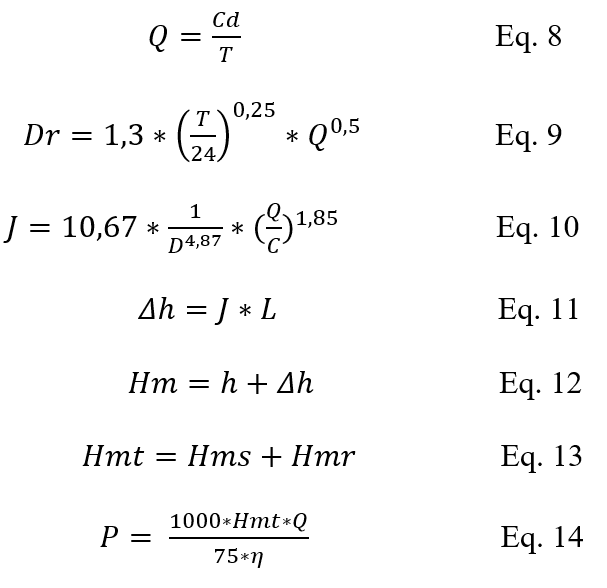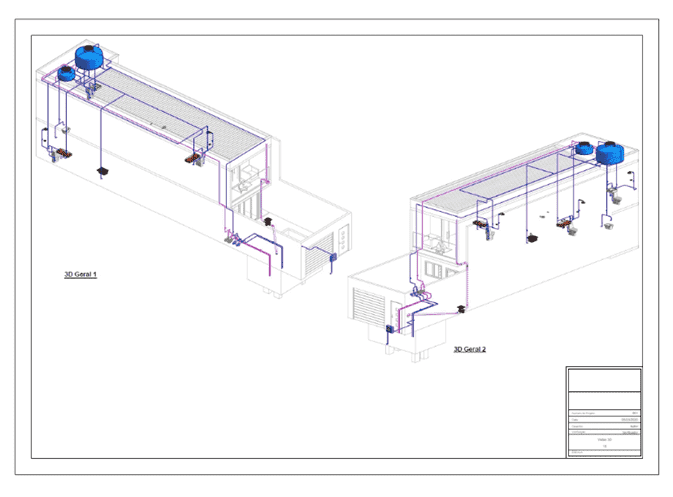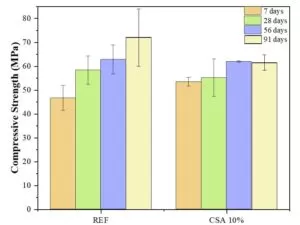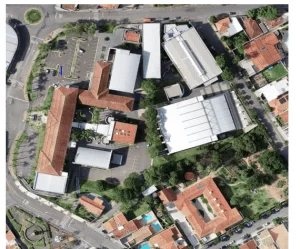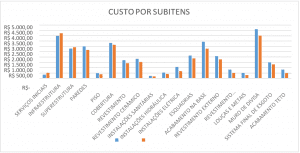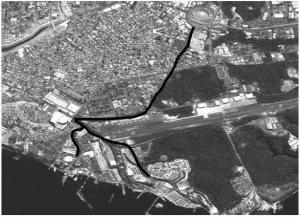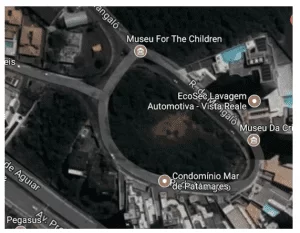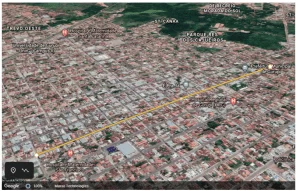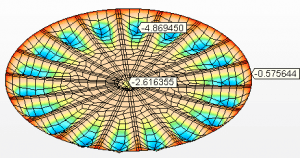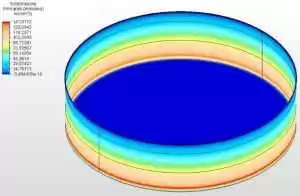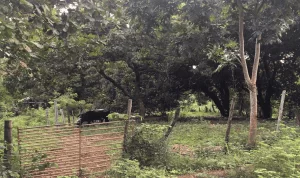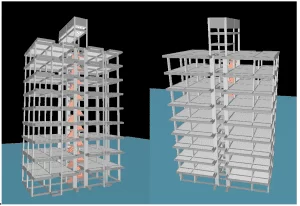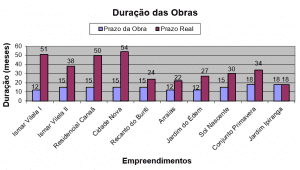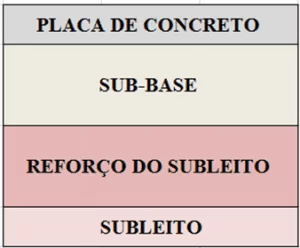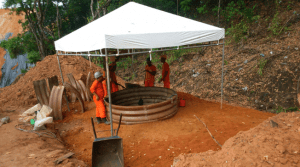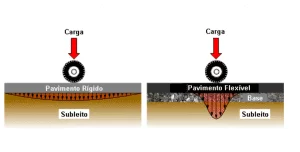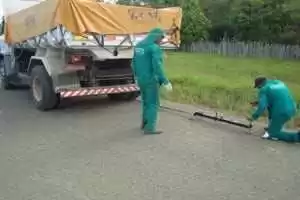ORIGINAL ARTICLE
BEZERRA, Francisco Paiva [1], SANTOS, Wendell José Soares dos [2]
BEZERRA, Francisco Paiva. SANTOS, Wendell José Soares dos. Rainwater harvesting system in a single-family residence in Pesqueira – Pernambuco. Revista Científica Multidisciplinar Núcleo do Conhecimento. Year. 07, Ed. 05, Vol. 06, pp. 33-55. May 2022. ISSN: 2448-0959, Access link: https://www.nucleodoconhecimento.com.br/civil-engineering/rainwater-harvesting, DOI: 10.32749/nucleodoconhecimento.com.br/civil-engineering/rainwater-harvesting
ABSTRACT
Due to water scarcity and various social problems caused by lack of access to water, it is clear that the population needs sustainable alternatives to remedy such failures. In this context, in order to emphasize the doctrine on the subject and highlight the importance of reuse water for the preservation of water resources for future generations, this article has as its guiding question: the use of a rainwater harvesting system presents economic, technical and environmental viability? Therefore, the objective is to present a proposal for a rainwater harvesting system in a single-family residence located in the city of Pesqueira, State of Pernambuco. The methodology was based on carrying out calculations of varied dimensions, which pointed out as a result the fact that the total volume was necessary to meet the reuse demands, being determined through the sum of the garden volume, garage volume and discharge volume of the residence. Finally, it was concluded that, in relation to the capture of rainwater through the roof of the studied building, it was possible to partially minimize flooding, as well as the reduction in the use of potable water provided by the concessionaire, making the project economically and environmentally viable at city of Pesqueira PE. In addition, it was found that there was a saving of 213.9775 L per day in the use of clean water through the use of the referred system, which generated a positive impact on the monthly value of the concessionaire’s water tariff.
Keywords: Water scarcity, Rainwater, Collection system.
1. INTRODUCTION
Water resources in Brazil are of public and economic interest, generating crises when exposed to scarcity, since they require adequate management, in addition to proper distribution in order to meet the demand of the entire population (FEITOSA, 2020). However, according to the National Agency for Water and Basic Sanitation (2020), the country has an average of 12% of fresh water on the planet, and is therefore one of the countries most covered by the distribution of water in the world.
However, in relation to the population average, it is possible to observe that the distribution of Brazilian springs presents unequal water divisions, as is the case in the North of the country, where the amount of water is disproportionate to the number of dwellings, with a concentration of 80 % of water for 5% of the population (ANA, 2020).
In this context, the United Nations (2017) indicates that the current waste of water can lead, if it is still constant, to a 40% decrease in water resources by the year 2030, and also predicts that with this decrease there will be a 55% increase in demand for water by the year 2050.
Therefore, these data show the environmental and conservative concern of the next generations, since awareness of the importance of saving water finds barriers in the poor waste habits of the population (PEDRANGELO et al., 2018). Thus, the reuse of water has become an intensive agenda for government and environmental discussions over the years (SILVA, 2019).
In this way, the research is justified by the importance of protecting this natural resource that, in the face of so much waste and increased demands that are often inaccessible, that studies on the subject are needed in order to achieve adequate preservation. Therefore, the following research problem arises: Is the use of a rainwater harvesting system economically, technically and environmentally viable?
The answer to the question is positive due to the following hypothesis: Through the capture of rainwater, through the roof of a building, this water being directed to a specific reservoir, the rainwater will be stored in order to reduce the direct flow to the public road , minimizing flooding, and can later be used in certain non-potable domestic uses, which make it possible to reduce the use of potable water provided by the concessionaire.
In view of this, the present work aims to present a proposal for a rainwater capture system in a residence in the city of Pesqueira Pernambuco, in order to emphasize the doctrine on the subject and highlight the importance of reuse water for the preservation of the resource water for future generations.
2. WATER SITUATION IN BRAZIL
2.1 WATER DISTRIBUTION IN THE COUNTRY
In Brazil, the largest distribution of water is concentrated in the North region, totaling 68% of all water in the country, with the population of this region equivalent to 7% of the national population. In the Southeast is concentrated 6% of the national water, and in the Northeast only 3% of these reserves, both regions being the most populous in Brazil (PENA, 2022). The highest per capita indices of national water availability are located in the North, Midwest, and South, which, like the North, have lower population density and their watersheds have higher flows (PENA, 2022).
Although in some regions the number of water distributions is greater than others, the fact that they still experience water crises, whether caused by disasters or scarcity, is not exempted, requiring constant planning, management and infrastructure to ensure availability of this resource for all inhabitants, which is not a constant occurrence (PENA, 2022).
2.2 SANITATION IN BRAZIL
The quality of rain is composed of four processes, which concern water before reaching the ground, after reaching residential roofs, stored water and consumed water. In all these phases, there is the possibility of treatment so that they are directed to non-potable reuse in a sustainable, safe and effective way (LIMA, 2015).
The National Sanitation Information System (SNIS)[3], administered by the National Sanitation Secretariat of the Ministry of Regional Development (SNS/MDR)[4], acts as an instrument of knowledge about basic sanitation services without equal in Brazil (SNIS, 2021).
In this way, the SNIS provides a set of structured data that favors the evaluation of the evolution of water supply services, in addition to sanitary sewage services since 1995, in addition to the management of urban solid waste since 2002 and the drainage and management of urban rainwater since 2015 (SNIS, 2021). Soon:
O SNIS norteia atividades como o planejamento e a gestão do setor de saneamento, a formulação de políticas públicas e programas, a definição e monitoramento de metas e atividade de regulação e a fiscalização dos serviços. O SNIS também foi fundamental para a estruturação do marco legal do saneamento, instituído pela Lei no 11.445/2007 e atualizado pela Lei no 14.026/2020 (SNIS, 2021, p. 05).
The objectives of this system are based on the planning and execution of public policies, in addition to providing guidance on the application of resources, through the following points:
- Knowledge and evaluation of the sanitation sector;
- Service performance evaluation;
- Improvement of management;
- Orientation of regulatory and inspection activities;
- Exercise of social control.
In this sense, the National Sanitation Secretariat (SNS, 2021) prepared a Thematic Diagnosis of the Urban Stormwater Drainage and Management module, based on the year 2020, carried out using information and municipal indicators. Therefore, the SNIS (2021) highlights:
Os serviços de drenagem e manejo das águas pluviais urbanas (DMAPU) evitam e atenuam impactos humanos, sociais, ambientais e econômicos resultantes de eventos hidrológicos impactantes. Nessa condição se enquadram inundações, enxurradas e alagamentos que ocorrem em áreas urbanas, especialmente nas que se caracterizam por ocupação desordenada de encostas e áreas naturais de drenagem, resultando na alteração e assoreamento de cursos hídricos e impermeabilização do solo (SNIS, 2021, p. 12).
These services are entirely linked to water supply, sanitary sewage and urban cleaning and solid waste management. Effective drainage, solid waste collection (trash) and sewage collection and treatment systems prevent rainwater from becoming vectors of disease proliferation, as well as pollution in water reserves, directed at society (SNIS, 2021 ). Therefore:
A abordagem integrada dos quatro componentes, orientada pela Lei Federal de Saneamento Básico (no 11.445/2007, atualizada pela Lei no 14.026/2020), é parte da evolução do conceito de DMAPU. No passado, a regra geral era afastar o mais rápido possível as águas pluviais de pontos de retenção, transferindo eventos hidrológicos para áreas à jusante (abaixo do ponto de ocorrência) (SNIS, 2021, p. 12).
The system also points out that solutions are currently prioritized for sustainable drainage (strips, infiltration ditches), flow damping infrastructure (reservoirs or retention and detention basins, lakes, large pools), linear parks (SNIS, 2021).
In this line of reasoning, it is known that the capture of rainwater can serve non-potable consumption, carried out through the gutters that direct the water to a separate reservoir, where waste and impurities are eliminated, a fact that is unified with planning and other previously mentioned necessary factors based on the SNIS, contributes to the drainage on public roads, in addition to reducing the impacts caused by excess rainwater (REZENDE and TECEDOR, 2017).
2.3 STORMWATER COLLECTION SYSTEMS
Water catchment systems have been used all over the world since antiquity, and there are records of their use by Mayan and Inca civilizations, among others. In this way, it is the capture of rainwater through gutters, roofs or other ways of directing this water to a reservoir that can be a cistern, or other modalities of it, in order to make its non-potable reuse possible. (LUCAS, 2016).
Thus, the 21st century was marked by the general implementation of this system due to population growth, in addition to other financial aspects, since these are factors that affect water security. Soon, the reuse of these waters began to be destined for non-potable consumption (LUCAS, 2016). In this sense, the author:
Os principais motivos que levam à decisão para se utilizar água de chuva são basicamente os seguintes: Conscientização e sensibilidade da necessidade da conservação da água; Região com disponibilidade hídrica menor que 1200 m3 /habitante x ano; Elevadas tarifas de água das concessionárias públicas; Retorno dos investimentos (payback) muito rápido; Instabilidade do fornecimento de água pública; Exigência de lei específica; Locais onde a estiagem é maior que 5 meses (LUCAS, 2016, p. 08).
Still, it is mentioned by the author that the main reason for using rainwater brought by the referred system for industries is to combine sustainable development with the reduction of their costs (LUCAS, 2016).
Regarding the reuse of residential rainwater, the main benefits for the use of sustainable architecture are the preservation of the environment, economy, quality of life, business differential, real estate valuation in addition to greater user satisfaction and employee productivity and for finally, the development of environmental awareness (GUERRA, 2016).
Finally, the rainwater harvesting system can occur through the roof, which is a part of the building located on the roof in order to protect the built areas against rain, sunlight and other elements. Through the shape of the surface of the roofs, it is possible to direct rainwater destined for some type of collection, whether through grates, gutters, and others (CARVALHO JÚNIOR, 2009).
3. MATERIALS AND METHODS
The research is a case study with the purpose of presenting a proposal for a rainwater capture system to provide the reuse of water and evaluate the economic and environmental viability of the system.
The bibliographical survey composed the theoretical framework of this research addressing the distribution of water in Brazil, the capture of rainwater and the systems of rainwater capture. As parameters for carrying out the sizing of rainwater, gutters and conductors, the following standards were used: NBR 5626/2020 compared to the same standard NBR 5626 of the year 1998, NBR 10844/1989, all ABNT standards. The example of using tables exposed by the official website of Schneider Motobombas (2019) was also used for sizing the pumps and the research by Coutinho et al., (2010), in order to define the hydraulic sizing.
3.1 STUDY AREA
The study in question is a single-family residential project located in the city of Pesqueira in the state of Pernambuco, as shown in Figure 1. It was modeled in software that uses BIM technology.
Figure 1: Location of the researched residence
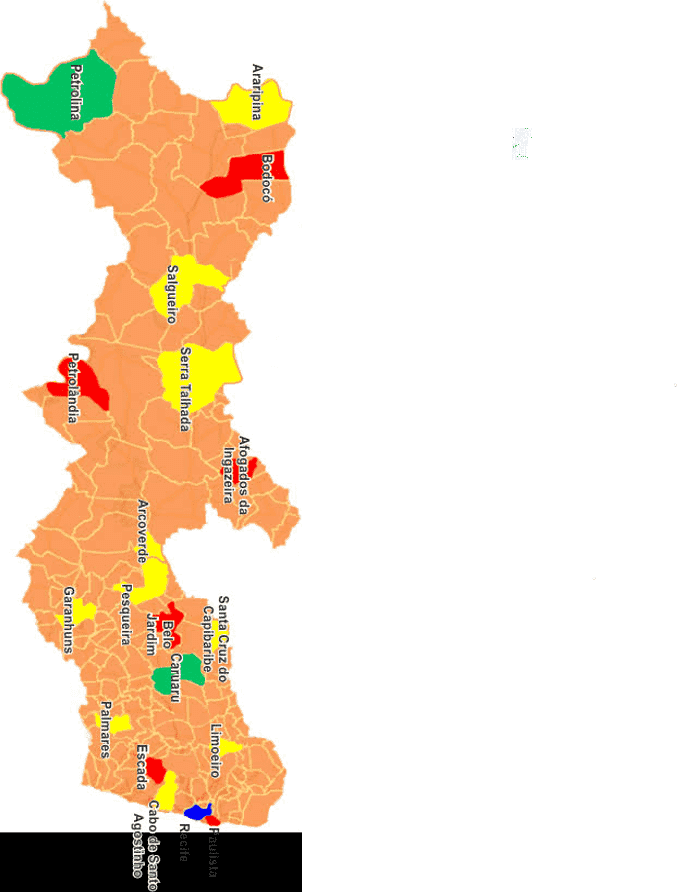
Figure 2 represents the residence where the rainwater catchment system was proposed. It was modeled in software that uses BIM technology
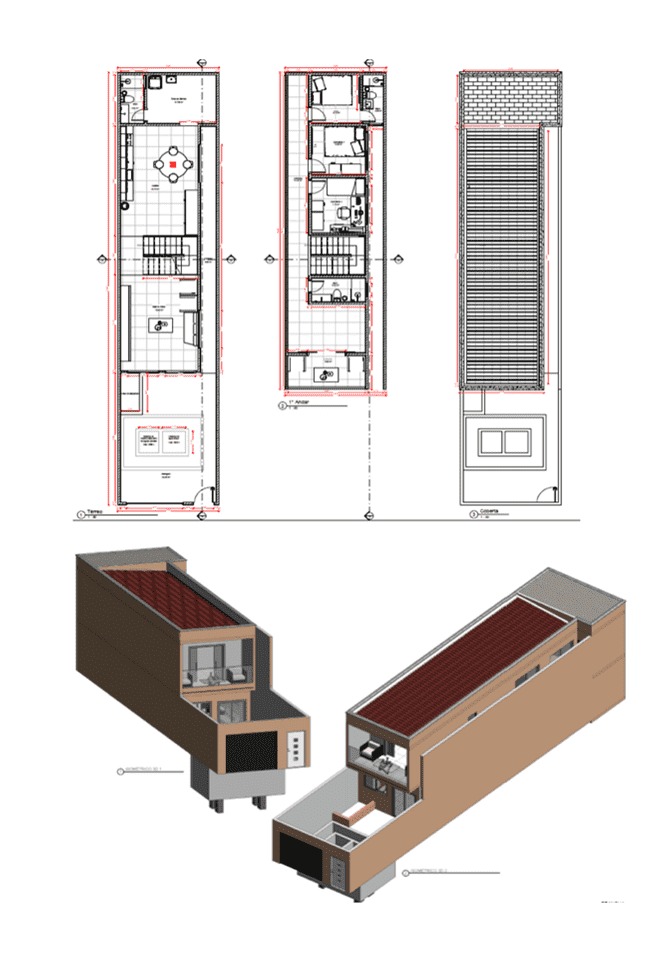
3.2 METHODOLOGY
In order to carry out the system for capturing water from local precipitation for non-drinking purposes, it is initially necessary to find the necessary values for capturing and storing this water volume. For this, sizing was carried out for the rainwater system, cold water and pumping, all of these complying with the criteria established by NBR 10844/1989, 5626/2020, 15527/2007.
According to NBR 10844/1989, the design flow can be found through equation 1:
By aiming to homogenize the information, the research by Coutinho et al., (2010) performed equations of intense rainfall for the state of Pernambuco, thus showing the equations for several regions of the state, and among them, Pesqueira. Given the importance of equations for intensity, duration and frequency of rainfall, linked to hydraulic projects and urban, agricultural and even highway drainage, project hydrographs become dependent on hyetograms associated with a return period and a specific duration (COUTINHO et al., 2010).
Therefore, it was highlighted by the authors that the information about the unknowns i-d-f does not yet exist for many cities in Brazil, with the existing values being subject to variations due to the realization of their equations at different times of the year in different methodologies (COUTINHO et al., 2010 ).
The rainfall intensity can be determined through the equation Intensity, Duration and Frequency (IDF). According to Coutinho et al., (2010) the IDF equation for the fishing town is represented by equation 2:
Thus, item 5.1.2 of NBR 10844/89 suggests some values for the return time according to the needs of the project, where T = 1 year for paved areas where puddles can be tolerated; T=5 years for roofs and/or terraces; T= 25 years for roofs and areas where waterlogging or overflow cannot be tolerated. For the project in question, a payback time of 5 years was considered.
Item 5.1.3 of NBR 10844/89 specifies that the precipitation time must be 5 minutes. NBR 10844/1989 presents some possibilities for estimating the contribution area depending on the design geometry. Figures 3 and 4 present the expressions that represent the configuration of the project in question.
Figure 3: Project Configuration
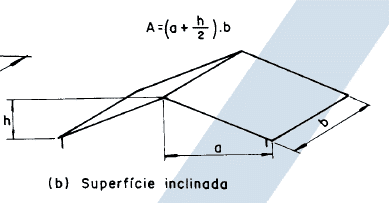
Figure 4: Surfaces
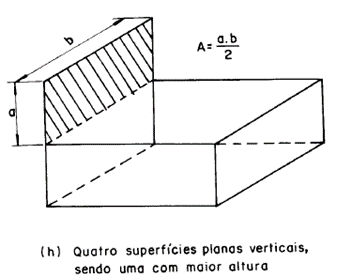
With the flow found, it was possible to determine the dimensions of the gutter used in the project, through the Manning-Strickler equation, named as Equation 3:
The roughness coefficient value (n) depends on the type of material chosen. Table 2 of item 5.5.7.1 of that standard determines the value of the roughness coefficient (n) depending on the material. In the project in question, plastic material for the gutters was adopted, so the roughness coefficient used was equal to 0.011.
The determination of the vertical and horizontal conductors was carried out using the gutter abacus with a sharp-edged outlet provided by NBR 10844/1989 and table 4 also from NBR 10844/1989.
For the dimensioning of the rainwater reservoir, NBR 15527/2007 was used, which in its Annex A suggests some ways to find the volume of the reservoir. The volume was calculated using the practical English method and the method of Azevedo Neto, adopting the lowest value found for the project.
Equations 4 and 5 express, respectively, the practical English method and the method of Azevedo Neto.
The average rainfall needed to calculate the reservoir volumes was determined from data provided by the Pernambuco Water and Climate Agency (APAC)[5] referring to rainfall station 18 in the city of Pesqueira/PE.
According to NBR 15527/2007, the volume of usable rainwater can be determined through equation 6:
Where:
V = annual, monthly or daily volume
P = average annual, monthly or daily precipitation
A = collection area (m²)
C = roof runoff coefficient
η = capture system efficiency
The runoff coefficient depends on the material used and can vary between 0.8 and 0.9. The value used for the efficiency of the η capture system is recommended by Tomaz (2003), in which the value of 0.9 is adopted.
For the dimensioning of the cold water reservoir, NBR 5626/2020 establishes several criteria for the execution of the reservoirs. Creder (1991), provides tables that help in choosing the variables needed to determine the capacity of the reservoir. Daily consumption can be expressed through equation 7:
According to NBR 5626/2020, reservoirs must have independent lifting systems. For the sizing of the pumping system, it was necessary to find the flow to be measured and the head so that the necessary power of the motor-pump set could be determined. Equations 8, 9, 10, 11, 12, 13 and 14 express the variables needed to determine the parameters mentioned above:
3.2 ECONOMIC AND ENVIRONMENTAL ANALYSIS
In order to determine the economic and environmental analysis of the study in question, the viability of implementing the system was determined based on the volume of abstraction in relation to the demand for non-potable water and the savings in paying the tariff to the responsible concessionaire.
Figure 5 shows the amounts charged by Pernambuco Sanitation Company (COMPESA)[6] according to the amount of m³ used in the period of 1 month.
Figure 5 – COMPESA Fee Values according to the monthly volume used
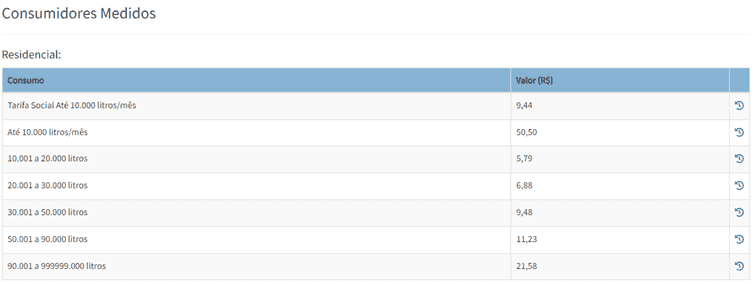
4. RESULTS
Table 1 below shows the results obtained in the design of the rainwater system:
Table 1: Sizing of Gutters and Conductors
| Sizing of Gutters and Conductors | |
| Rainfall intensity (I) – mm/h | 138,35 |
| Contribution Area (A) – m² | 51,15 |
| Project Flow (Q) – L/min | 117,95 |
| Gutter Base (b) – cm | 35 |
| Gutter height (h) – cm | 17,5 |
| Water depth (H) – mm | 117 |
| Vertical DN – mm | 75 |
| Horizontal DN – mm | 100 |
| Source: Author, 2022 | |
To determine the average annual precipitation in the city of Pesqueira, the rainfall monitoring records of the Pernambuco Water and Climate Agency (APAC) for the last 21 years were consulted. Graph 1 shows the monthly accumulated data from January 2000 to December 2021:
Graph 1 – Monthly accrued from 2000 to 2021 in Pesqueira – PE
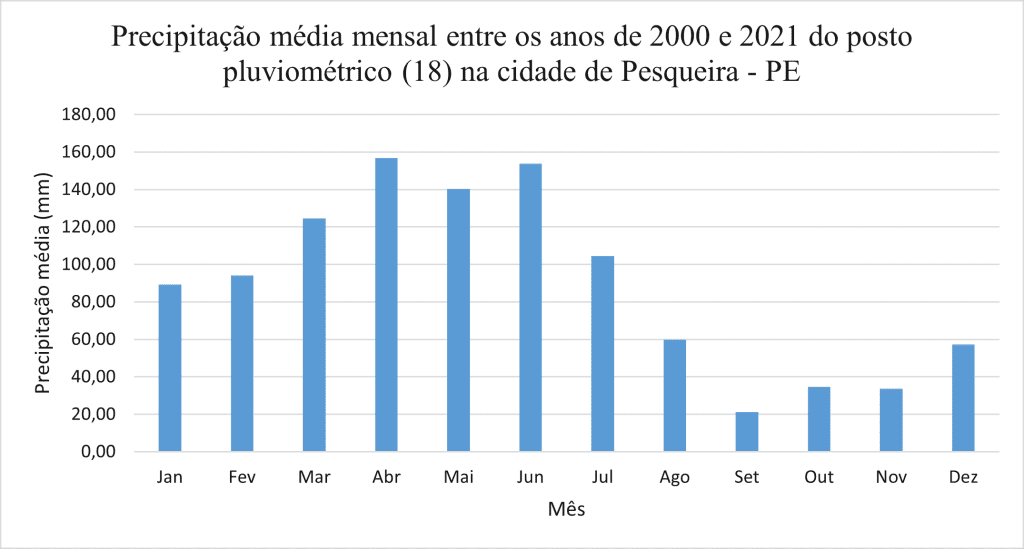
Calculating the arithmetic mean of the precipitation values in the graph above, we find the value of 89.17 mm. For the determination of the period of little or no rain (T) of the Azevedo Neto method, it was adopted that the period in which there was little or no rain was 5 months (August, September, October, November, December), because in these months precipitation was lower than the average value found. Table 2 represents the sizing of the Rainwater Reservoir.
Table 2 – Sizing of Rainwater
| Sizing Rainwater Reservoir | |
| Method | Volume (L) |
| Practical english | 1454,26 |
| Azevedo Neto | 6107,89 |
Source: Author, 2022.
Choosing the smaller value between the two methods, we can approximate the total volume to:
Therefore, the recommendations found in the literature were adopted (CREDER, 1991) regarding:
- Lower Reservoir: 60% * Reservoir Capacity (Cr)
- Upper Reservoir: 40% * Reservoir Capacity (Cr)
Soon:
Res. Inf.: 60%*1500 = 900 L
Res. Sup.: 40%*1500 = 600 L
Approximating the value of the upper reservoir to the commercially closest one, we have:
 Em relação ao projeto em questão, as recomendações mencionadas foram seguidas mesmo que elas não tenham sido explícitas em sua versão atualizada datada no ano de 2020. Adotando que todas as dimensões, terão o mesmo tamanho (a=b=c):
Em relação ao projeto em questão, as recomendações mencionadas foram seguidas mesmo que elas não tenham sido explícitas em sua versão atualizada datada no ano de 2020. Adotando que todas as dimensões, terão o mesmo tamanho (a=b=c):

Replacing the volume of the lower reservoirs, we have:
- 0,90 = a³
- a = 0,9654 m
- a ≈ 1 m
Even if these dimensions meet the supply needs of the residence, it was observed that the height has a low value, a fact that can make the installation of the pumping system difficult. In this sense, the height of both reservoirs equivalent to 2 m was adopted, in order to obtain a better execution of the pumps. Therefore:
Lower Volume = 2000 L
a = b = 1 m
c = 2 m
For dimensioning the capacity of the cold water reservoir, the table proposed by Creder was used to estimate the per capita consumption of the residence. Assuming that the population of the building will have 6 inhabitants and a per capita consumption of 200 L/day, we can find the daily consumption of the residence.
The literature recommends that the reservoir capacity contains twice the daily consumption used, therefore:
Cd = 2400 L/day
With the determined daily consumption, it was possible to allocate the volumes for the lower and upper reservoirs:
Res. Inf.: 60%*2400 = 1440 L
Res. Sup.: 40%*2400 = 960 L
Cd = 1200 L/day
The literature recommends that the reservoir capacity contains twice the daily consumption used, therefore:
Cd = 2400 L/day
With the determined daily consumption, it was possible to allocate the volumes for the lower and upper reservoirs:
Res. Inf.: 60%*2400 = 1440 L
Res. Sup.: 40%*2400 = 960 L
- 1,44 = a³
- a = 1,12924 m
- a ≈ 1,15 m
Even if these dimensions meet the supply needs of the residence, it was observed that the height has a low value, a fact that can make the installation of the pumping system difficult. In this sense, the height of both reservoirs equivalent to 2 m was adopted, in order to obtain a better execution of the pumps. Therefore:
Lower Volume = 2645 L
a = b = 1,15 m
c = 2 m
After sizing the reservoirs, it is necessary to calculate the pump power required to raise the water to the upper reservoir. According to NBR 5626/20, the discharge systems must have at least two pumps operating independently from each other and must avoid the phenomenon of cavitation. For building installations, the efficiency of the motor-pump set can vary between 40% and 75%. Thus, the company Schneider Bombas (2019) establishes:
- Power up to 2CV – Yield: 50%
- Power up to 12.5CV – Yield: 60%
- Power greater than 12.5CV – Yield: 50%
The ideal period for the operation of a pump varies between 4 hours and 6 hours. In the project in question, an operating time of 5 hours was adopted. Table 3 contains dimensioned values for both systems, rainwater and cold water.
Table 3 – Elevator system sizing
| Sizing Variables | Elevator System | |||
| Rainwater | Cold water | |||
| Suction | Repression | Suction | Repression | |
| Flow (Q) – m³/h | 2,4 | 2,4 | ||
| Discharge diameter (Dr) – mm | 32 | 25 | 32 | 25 |
| Suction diameter (Ds) – mm | 32 | 25 | 32 | 25 |
| Actual length (L) – m | 5,1673 | 23,532 | 5,5468 | 27,3092 |
| Geometric height (h) – m | 2 | 6,44 | 2 | 6,69 |
| Equivalent length (Le) – m | 45,7 | 39,9 | 45,7 | 40,4 |
| Unit head loss (J) – m/m | 0,005706 | 0,021 | 0,005706 | 0,019 |
| Head loss (Δh) – m | 0,29 | 1,34 | 0,3 | 1,29 |
| Manometric height (Hmt) – m | 2,29 | 7,78 | 2,3 | 7,98 |
| Yield (η) – % | 50 | 50 | ||
| Power of the motor-pump set (P) – hp | 0,074 | 0,076 | ||
Source: Author, 2022.
From the pump catalog (SCHNEIDER, 2019) it was possible to determine the appropriate pump for the demand. The BC-98 model was chosen, with a power equal to 1/3 hp, which, in addition to being silent, adequately meets the requirements of the building.
Based on data provided by Sanepar, we can estimate the demand needed for daily activities. Table 4 below shows the estimated consumption of a house with six inhabitants.
Table 4 – Water use profile
| PROFILE OF WATER USE IN THE DOMESTIC ECONOMY FOR SIX PEOPLE | |||
| Use | Consumption for 1 month (L) | Consumption for 1 day (L) | Per capita consumption (L) |
| Brush teeth (3 times a day each person) | 180 | 6 | 1,5 |
| Electric shower bath (5 minutes, 1 time a day for each person) | 3600 | 120 | 30 |
| Toilet flush (8 times a day) | 3600 | 120 | 30 |
| Wash dishes (3 times a day) | 2700 | 90 | 22,5 |
| Wash clothes/tank (15 minutes 3 times a week) | 2880 | 96 | 24 |
| Drinking water | 360 | 12 | 3 |
| Food preparation | 900 | 30 | 7,5 |
| House cleaning (1 bucket per day) | 900 | 30 | 7,5 |
| Total | 15120 | 504 | 126 |
Source: Adapted from Sanepar, 2020.
According to Hespanhol (2012), for irrigation of gardens and washing of patios, consumption of 3L/m² and 2L/m² can be considered. From the values suggested by Hespanhol, and the information in Table 5, it is possible to estimate the water demand for cleaning and maintenance of the garage and garden, considering that the garage will be washed twice a week and the garden will be irrigated 3 times a week, as well as the demand for the use of hydraulic discharges.
Table 5 – Calculation of non-drinking demand
| Non-potable monthly demand | |||
| Parameters | Garage | Garden | Bathroom |
| Area (m²) | 32,20 | 9,86 | – |
| Weekly volume (L) | 128,78 | 88,76 | 900,00 |
| Monthly volume (L) | 515,12 | 355,05 | 3600,00 |
Source: Author, 2022.
The total volume needed to meet reuse demands can be determined by adding up the monthly volumes corresponding to the garden, garage and the house’s discharge volume.
Therefore:
Demand= 515,12 + 355,05 + 3600
Demand= 4470,17 L/mês
Having established the necessary value for the reuse volume and using equation 6, considering the surface runoff coefficient C equal to 0.8 and a catchment factor equal to η equal to 0.9 as recommended by Tomaz (2003), it was possible to evaluate the economic and environmental viability of the project. Table 6 shows the results obtained in this verification.
Table 6 – Potential monthly funding
| Period (month) | Average precipitation (mm) | Total Area (m²) | Required demand (m³) | Captured volume (m³) | Percentage served (%) | Missing percentage (%) |
| Jan | 89,27 | 47,57 | 4,48 | 3,06 | 68,25 | 31,75 |
| Feb | 94,12 | 47,57 | 4,48 | 3,22 | 71,95 | 28,05 |
| Mar | 124,60 | 47,57 | 4,48 | 4,27 | 95,26 | 4,74 |
| Apr | 156,71 | 47,57 | 4,48 | 5,37 | 119,81 | -19,81 |
| May | 140,26 | 47,57 | 4,48 | 4,80 | 107,23 | -7,23 |
| Jun | 153,85 | 47,57 | 4,48 | 5,27 | 117,62 | -17,62 |
| Jul | 104,61 | 47,57 | 4,48 | 3,58 | 79,97 | 20,03 |
| Aug | 59,76 | 47,57 | 4,48 | 2,05 | 45,69 | 54,31 |
| Sep | 21,21 | 47,57 | 4,48 | 0,73 | 16,21 | 83,79 |
| Oct | 34,65 | 47,57 | 4,48 | 1,19 | 26,49 | 73,51 |
| Nov | 33,61 | 47,57 | 4,48 | 1,15 | 25,69 | 74,31 |
| Dec | 57,35 | 47,57 | 4,48 | 1,96 | 43,85 | 56,15 |
Source: Author, 2022.
Analyzing the information in Table 6, it is clear that the collection system only supplies the necessary demand in the months of April, May and June. According to Figure 5, the monthly fee charged for homes that consume up to 10 m³ is R$50.50, which generates an annual expenditure of R$606.00. As the volume of water collected serves only three months (April, May and June), there is a reduction in the annual value of R$ 151.50, which corresponds to savings of 25% per year. From an environmental point of view, the use of rainwater contributes to the preservation and rational use of resources, increasingly reducing the impacts caused by scarcity.
5. FINAL CONSIDERATIONS
The current situation of the Brazilian population, corresponding to the water crises found in several cities in many Brazilian states, urgently yearns for sustainable measures that can preserve water resources and guarantee them for future generations. In view of this, the research proposes sustainability measures to cause the reuse of rainwater in a way that the environment is benefited and not even more attacked.
The present project was about a rainwater collection system, in which, from the rains, the residential roof (part of the object of this research), directed this water to the residential gutters, which in turn destined the rainwater that without the system, it would be routed to the so-called street gutter, to a reservoir created specifically for its occupation.
The water placed in the reservoir began to be reused in certain non-potable domestic uses, such as flushing, gardening, washing floors and cars, among other purposes. In this way, reuse prevented the waste of rainwater, also helping to mitigate problems such as flooding in the streets and other negative factors brought about by heavy rains.
The rainwater harvesting system is an interesting proposal in which it saved approximately 4.48 m³ of water, however, this savings could only be observed during the months of April, May and June, which are the rainiest months Of region. Even so, there is a 25% saving in the amount charged annually in the concessionaire’s tariffs (COMPESA) which makes the project interesting, because even though it represents a small percentage when compared to the initial expense with the lower reservoirs and the pumping system, in the long term becomes a viable choice, in addition to benefiting the environment.
In view of the above, in response to the guiding question of this research, it was possible to conclude that in relation to the capture of rainwater through the roof of the studied building, it was possible to partially minimize flooding, as well as the reduction in the use of potable water provided by the concessionaire, making the project economically and environmentally viable for the city of Pesqueira – PE.
REFERENCES
AGÊNCIA NACIONAL DE ÁGUAS – ANA (BRASIL) – Segurança hídrica. Conjuntura dos recursos hídricos: Informe 2020. Disponível em: http://conjuntura.ana.gov.br/static/media/Capitulo5.a4c79690.pdf>.
ABNT – ASSOCIAÇÃO BRASILEIRA DE NORMAS TÉCNICAS. Norma Técnica 5626, de Junho de 2020. NBR 5626 – Sistemas prediais de água fria e água quente: Projeto, execução, operação e manutenção, [S. l.], 29 jun. 2020.
ABNT – ASSOCIAÇÃO BRASILEIRA DE NORMAS TÉCNICAS. Norma Técnica 5626, de Setembro de 1998. NBR 5626 – Instalação Predial de Água Fria, [S. l.], 30 out. 1998.
ABNT – ASSOCIAÇÃO BRASILEIRA DE NORMAS TÉCNICAS. Norma Técnica 10844, de dezembro 1989. NBR 10844 – Instalações Prediais de Águas Pluviais.
CARVALHO JÚNIOR, Roberto de. Instalações Hidráulicas e o Projeto de Arquitetura. São Paulo: Blucher, 2009, 2a edição.
COUTINHO, et al. Coletânea De Equações De Chuvas Intensas Para O Estado De Pernambuco. Simpósio Brasileiro de Recursos Hídricos. 2010.
CRC PE. Subsedes, delegacias e representações. 2022, disponível em: https://www.crcpe.org.br/institucional/delegacias/
CREDER, H. Instalações Hidráulicas e Sanitárias. 5ª edição, de. LTC. 1991.
FEITOSA, M. L. G. Análise De Sistema De Captação E Reuso De Água Do Edifício Acqua Home Club, Na Cidade De Caruaru – PE. Caruaru, 2020.
GUERRA. B. B. Uso da água como fonte renovável em edificações. Revista de Arquitetura IMED, 5(2): 4-9, 2016 – ISSN 2318-1109.
GAITÁN, M. C. P e TEIXEIRA, B. A. N. Aproveitamento de água pluvial e sua relação com ações de conservação de água: estudo de caso em hospital universitário, São Carlos (SP). Engenharia Sanitaria e Ambiental [online]. 2020, v. 25, n. 1.
LUCAS, F. V. Sistema De Captação E Aproveitamento De Águas Pluviais Em Indústria De Alimentos. Brasília, 2016.
LIMA. A. Captação Da Água Da Chuva Para Consumo Doméstico. Ariquemes, 2015.
NAÇÕES UNIDAS. Água. 2017. Disponível em: https://unric.org/pt/agua/
OMS – ORGANIZAÇÃO MUNDIAL DE SAÚDE. Relatório das Nações Unidas sobre Desenvolvimento dos Recursos Hídricos. Boletim da Organização Mundial de Saúde, 2017.
PENA, R. F. Alves. “Distribuição da água no Brasil“; Brasil Escola. Disponível em: https://brasilescola.uol.com.br/geografia/distribuicao-agua-no-brasil.htm. Acesso em 21 de abril de 2022.
PEDRANGELO, Alessandra de Castro; REZENDE, Luciana Cristina Soto Herek; YAMAGUCHI, Natália Ueda. Avaliação de um sistema residencial para coleta de água de chuva. Maringá, 2018.
REZENDE, J. H. e TECEDOR, N. Aproveitamento de água de chuva de cobertura em edificações: dimensionamento do reservatório pelos métodos descritos na NBR 15527. Revista Ambiente & Água, 2017, v. 12, n. 6.
SALLA, M. R. LOPES, G. B. PEREIRA, C. E. NETO, J. C. M. PINHEIRO, A. M. Viabilidade técnica de implantação de sistema de aproveitamento de água pluvial para fins não potáveis em universidade. Ambiente Construído, Porto Alegre, v. 13, n. 2, p. 167-181, 2013.
SILVA, Douglas dos Santos. Análise da utilização de um sistema de reuso de águas pluviais e águas cinzas em uma edificação multifamiliar na cidade de Caruaru-PE. Caruaru, 2019.
SCHNEIDER MOTOBOMBAS. Tabela de Seleção de Bombas e Motobombas, 2019.
SNIS. Diagnóstico Temático Drenagem e Manejo das Águas Pluviais Urbanas Visão Geral ano de referência 2020. 2021. Disponível em: http://www.snis.gov.br/downloads/diagnosticos/ap/2020/DIAGNOSTICO_TEMATICO_VISAO_GERAL_AP_SNIS_2021.pdf
ANNEXES
APPENDIX – FOOTNOTE
3. Sistema Nacional de Informações sobre Saneamento (SNIS).
4. Secretaria Nacional de Saneamento do Ministério do Desenvolvimento Regional (SNS/MDR).
5. Agência Pernambucana de Águas e Clima (APAC).
6. Companhia Pernambucana de Saneamento (COMPESA).
[1] Graduating in Civil Engineering. ORCID: 0000-0002-7445-1408.
[2] Master in Civil and Environmental Engineering. ORCID: 0000-0003-1496-6626.
Sent: May, 2022.
Approved: May, 2022.




